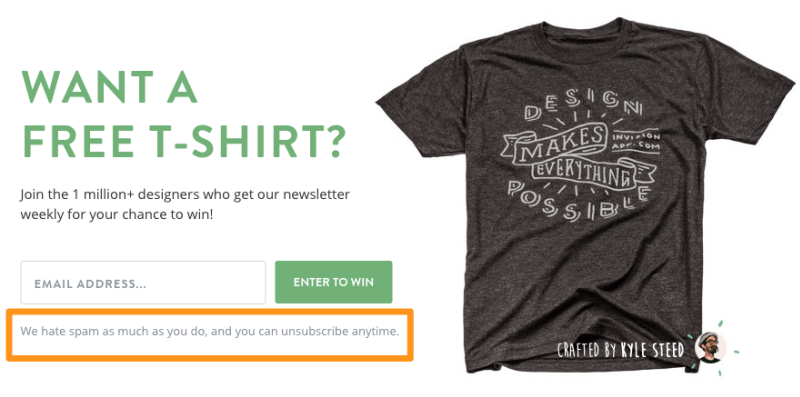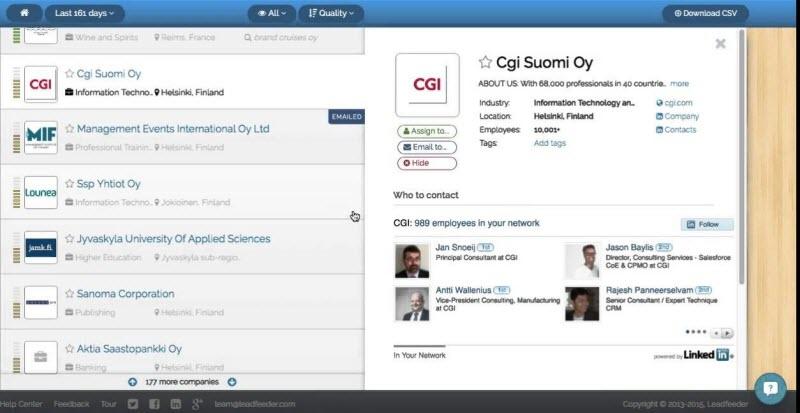
Getting your promoted social posts and search ads in front of your sales prospects’ eyes is great and all, but the inbox is where you really want to be.
People often buy B2C products on a whim, but with its longer sales cycles, B2B is entirely different. That’s where email marketing truly shines. When your marketing message reaches your ideal audience members’ email accounts, you’re able to cultivate relationships over time, personalizing the content, tracking each lead’s progress along the buyer’s journey and enabling self-service nurturing with triggered responses.
That’s why respondents to eConsultancy’s 2016 Email Marketing Industry Census were nearly twice as likely to characterize their email marketing activity ROI as “excellent” than their PPC activity ROI.
So why doesn’t everybody just stop buying PPC ads and use email instead? The answer is simple: access. Email marketing only works well, and ethically, when it’s permission-based, and people aren’t so generous when it comes to granting access to their inboxes. That’s one of the reasons why it’s so effective when you do have permission. Reaching people who don’t know you with ads is far easier to do than reaching them with email.
Permission to Nurture
According to one tally (pdf), more than 203 billion emails are sent and received during the average day, and that figure is expected to grow by over 4% per year over the next four years, bringing the daily total to nearly 258 billion by the end of 2020. Some 43% of U.S. adults say half of their email is from marketers, so of course it’s going to be important, and difficult, to obtain opt-ins and stand out from the crowd.
Many of your site visitors will be wary of filling out signup forms, simply because they’re afraid of getting spammed. It’s a top-of-the-funnel catch 22.
One way to circumvent this issue is to make sure you include a statement about valuing email privacy and letting the prospects know exactly how you intend to use their contact details. They may also be worried about how you’ll handle their personal information, so keep the initial ask to email and name.
Once you build trust with them, they’ll be more apt to trust you with more sensitive information like address, phone number, and payment account information. If you ask for a credit card for a free trial, you may find people are less apt to sign up, simply because they don’t trust you enough just yet.
But that’s all a matter of lead capture conversion optimization, which only comes into play once your audience members are actually on your site. And even if you do manage to maximize these conversions on your site, you’ll still be getting contact details for a small fraction of these people. If you’re paying Google, Facebook or any other ad platform to send these site visitors your way, then you need to think about what you hope to accomplish once they arrive.
If nurturing relationships via email isn’t particularly important to your business’s customer acquisition processes, then by all means – stay the course with ads aimed at driving traffic to your content pages. For the rest of us, though, there are some great ways to use pay-per-click advertising to gain access to your prospects’ inboxes.
Let’s take a look at three of them.
1. Pay Your Way In Using Gmail Ads
This approach, also known as Gmail Sponsored Promotions (GSP), will get you an ad placement at the top of your prospects’ inboxes and/or in the right-hand sidebar. This media buy is technically part of the Google Display Network (GDN), so that’s where you’ll find it in your AdWords dashboard.
Here’s how Gmail ads look on the audience’s end.
Because we’re talking about GDN-powered media placements, you can use all of GDN’s targeting capabilities with your GSP campaigns. Keyword-based targeting is determined via Google’s scans for word strings in emails, and you can segment by gender, age and parental status. You can also use retargeting lists with GSP.
To use this feature, you’ll have to run an “All features” AdWords campaign, which lets you select ads in Gmail using custom ads in the ad gallery. When you run this kind of ad, you’ll only be paying for the clicks on the collapsed ad as shown in the Gmail inbox tab. After someone expands your ad, any future clicks on your content are free.
However, be aware that not all Gmail users have enabled this feature. While it’s a standard option, users always have the ability to turn it off. Plus, Gmail ads only get you in the inboxes of Gmail users. While Gmail is the industry standard email client, placing your message on Gmail alone means missing out on users of other platforms. GSP is likewise problematic in that it might sit in the inbox, but that doesn’t make it an email, so you won’t get the same options for nurturing leads over time via triggered automation.
2. Use Sales Intelligence Tools
Sales intelligence tools can show you what companies your anonymous website visitors work for. Then, you can use a tool like LinkedIn Sales Navigator to send buyers at those companies targeted InMail messages.
Of course, this approach requires messaging people with great care, so as not to come off as spammy or stalker-y. Simply writing that you were wondering if they need any help finding the best solution for them, or letting them know about an exceptionally awesome item of useful content that you’ve recently published, may be the best approach.
Leadfeeder, a particularly powerful sales intelligence platform, connects to your Google Analytics account and uses visitors’ IP addresses to identify the companies they work for. The platform, which integrates with many CRMs, includes logs of every page visited by each anonymous visitor, and you can click through from your Leadfeeder dashboard straight through to the LinkedIn profile pages of people at the visitor’s company.
The advantage of using sales intelligence tools in tandem with PPC is huge. When every site visitor can be considered a lukewarm lead, you don’t need to think about driving traffic as a potential waste – all you need to do is set up your ads to send relevant people to your best content assets, and you don’t even have to gate this content behind any registration forms.
3. Run Lead Capture Ads on Facebook and Twitter
Both of these top social platforms have the ability to run highly targeted ads, at a relatively low cost per click (CPC), depending on how granular you wish to go with your campaign targeting.
The advertising formats supported by Facebook and Twitter are always expanding and getting more sophisticated, and in recent months, we’re seeing more and more advertisers working with lead capture ads. When people encounter promoted posts that have lead capture functionality, they can opt in without ever leaving their newsfeeds. It’s super powerful stuff, because it removes the need for optimized landing pages on your site – instead of paying for clicks, you’re paying for actual email subscribers.
Some PPC experts have found that they acquire more leads for less money using classic promoted social post formats, using conversion tracking pixels to optimize campaigns over time. It’s definitely something worth experimenting with, so you can see which method is best for your business.
You’ll also want to entice opt-ins by offering premium content to ad respondents. That premium content experience can be anything from a video series to an email course to an ebook to an interactive calculator tool. Whatever lead magnet you go live with, make sure it’s good quality and relevant to your ideal audience, and most importantly, unavailable elsewhere. You want to amplify the exclusivity factor to make your subscribers feel special.
Lead Capture Isn’t for Everybody
The reality is, some people just aren’t going to join your email subscriber list, and that’s fine. And no matter the size of your niche industry, you’ll never get 100% participation – or anywhere near it. You want qualified people to join anyway, so if they aren’t interested, then you likely aren’t either.
Just don’t let the idea of an imperfect or non-linear sales funnel hold you back. With these three methods, you’re sure to make your way into plenty of relevant prospects’ inboxes, so you can start nurturing relationships and closing deals that last.
Tamar Weinberg is a professional hustler and author of the bestselling social media book The New Community Rules: Marketing on The Social Web. She blogs about all things tech and social at Techipedia.










